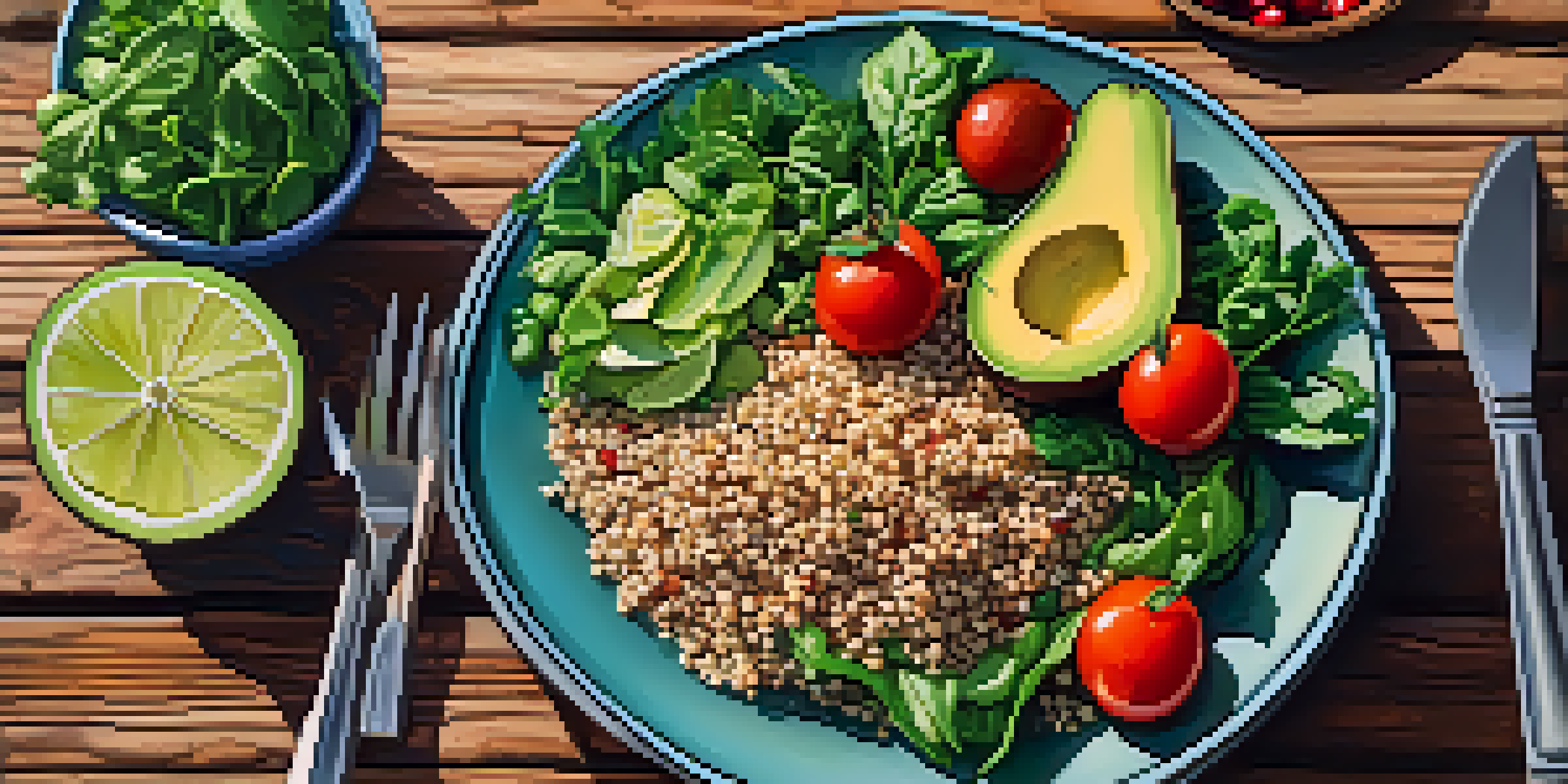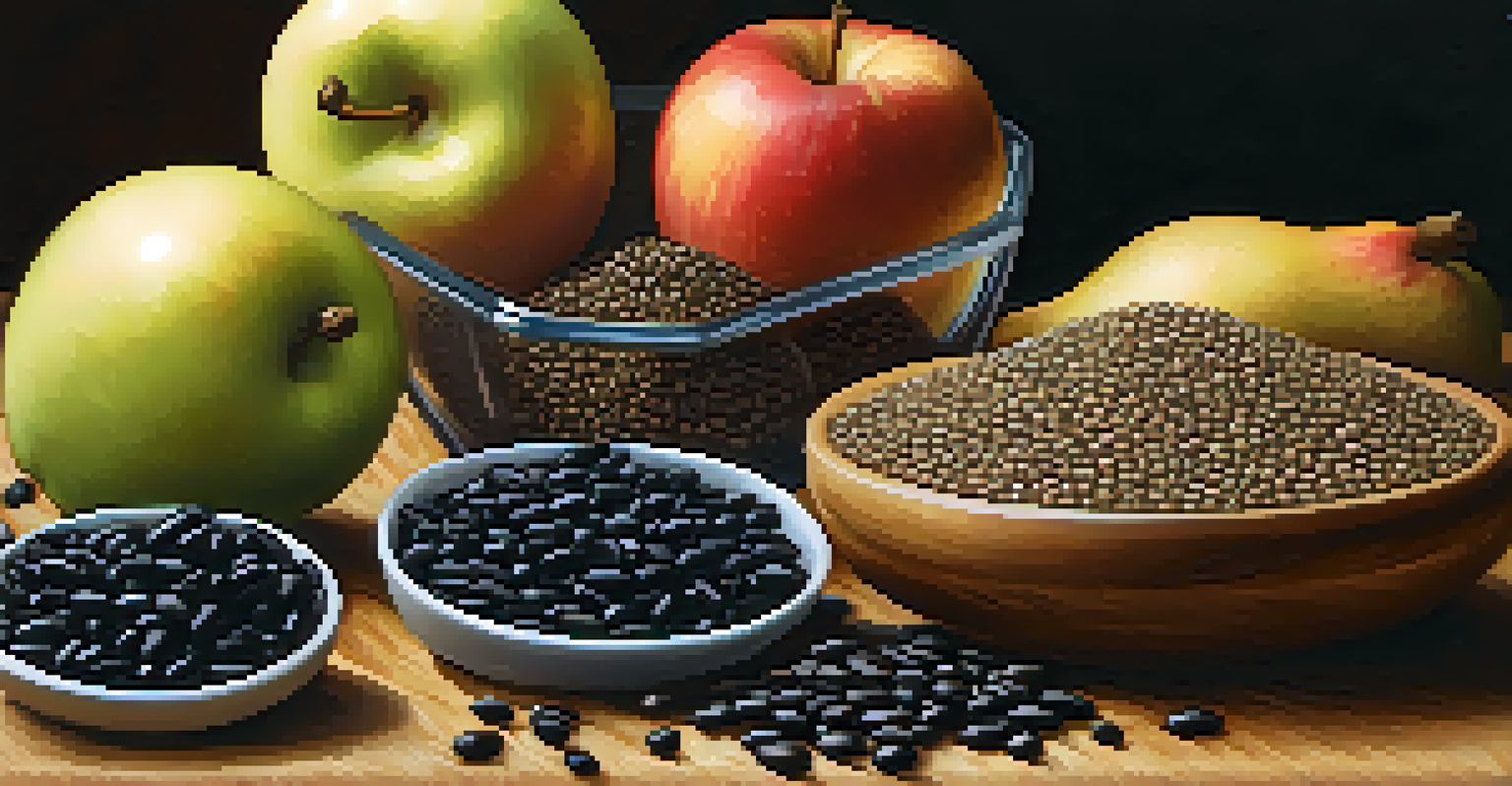The Role of Fiber in Vegan Diets for Weight Loss

Understanding Fiber: The Basics You Need to Know
Fiber is a type of carbohydrate that our bodies can't digest, yet it's crucial for good health. It comes in two forms: soluble and insoluble, each offering unique benefits. Soluble fiber, found in foods like oats and beans, dissolves in water, while insoluble fiber, present in whole grains and vegetables, adds bulk to our stool.
Let food be thy medicine and medicine be thy food.
In a vegan diet, fiber-rich foods are abundant, providing a natural way to satisfy hunger without consuming excess calories. This is especially helpful for those looking to lose weight. When we eat high-fiber foods, they tend to keep us full longer, reducing the likelihood of overeating.
Moreover, fiber plays a vital role in regulating blood sugar levels, which can prevent spikes and crashes that lead to cravings. By incorporating fiber into a vegan diet, individuals can enjoy a variety of delicious foods while working towards their weight loss goals.
The Benefits of Soluble Fiber in Vegan Diets
Soluble fiber is a powerhouse for weight loss, especially in vegan diets. Foods rich in soluble fiber, such as lentils, chia seeds, and avocados, form a gel-like substance in the gut, which slows digestion. This helps you feel fuller for longer, curbing unnecessary snacking.

Additionally, soluble fiber aids in lowering cholesterol levels and stabilizing blood sugar, which is crucial for managing hunger. When blood sugar levels are stable, you’re less likely to experience cravings, making it easier to stick to your weight loss plan.
Fiber Aids Weight Loss Success
Incorporating fiber-rich foods into a vegan diet helps control appetite and reduces cravings, making it easier to stick to weight loss goals.
Incorporating soluble fiber into your meals can be simple and enjoyable. Think of adding a spoonful of chia seeds to your smoothie or enjoying a hearty lentil soup; these small changes can significantly impact your weight loss journey.
Insoluble Fiber: The Unsung Hero of Weight Loss
While soluble fiber gets a lot of attention, insoluble fiber is equally important in a vegan diet for weight loss. Found in foods like whole grains, nuts, and the skins of fruits, this type of fiber adds bulk to the stool and promotes regular bowel movements. This can help prevent constipation and discomfort.
The food you eat can be either the safest and most powerful form of medicine or the slowest form of poison.
Insoluble fiber also helps you feel satisfied after meals by filling your stomach without adding calories. This means you can enjoy larger portions of healthy foods, which can be particularly beneficial for those looking to lose weight while still feeling full and satisfied.
By including a variety of fiber-rich foods in your diet, such as whole grain bread or a fresh garden salad, you ensure that you’re getting both types of fiber. This balance not only enhances weight loss but also contributes to overall digestive health.
Fiber-Rich Vegan Foods to Include in Your Diet
When embarking on a vegan diet for weight loss, it’s essential to know which fiber-rich foods to include. Beans, lentils, quinoa, oats, and a variety of fruits and vegetables are excellent choices. These foods not only provide fiber but also come packed with vitamins and minerals that support overall health.
For instance, a cup of black beans contains around 15 grams of fiber, making it a fantastic addition to your meals. You can easily incorporate them into a salad, soup, or even as a filling for tacos. Similarly, fruits like apples and pears are not only delicious but also provide a satisfying crunch.
Types of Fiber Matter
Both soluble and insoluble fibers play crucial roles in a vegan diet, with soluble fiber helping to regulate blood sugar and insoluble fiber promoting digestive health.
Experimenting with different fiber-rich foods can keep your meals exciting and flavorful. By exploring various recipes that highlight these ingredients, you can discover new favorites that promote weight loss while enjoying the process.
How Fiber Helps Control Appetite and Cravings
One of the key ways fiber supports weight loss is by controlling appetite and reducing cravings. High-fiber foods take longer to chew, which can slow down your eating and allow your body to register fullness. This means you’re less likely to eat past the point of satisfaction.
Furthermore, fiber-rich foods often have a low energy density, meaning they provide fewer calories for the same volume of food. This allows you to eat larger portions without exceeding your calorie goals, making weight loss feel less restrictive.
By focusing on high-fiber meals, such as a hearty vegetable stir-fry or a filling smoothie bowl, you can enjoy the process of eating while still making significant strides towards your weight loss goals.
Incorporating Fiber into Your Daily Meals
Adding more fiber to your vegan diet doesn’t have to be complicated. Start by gradually incorporating more vegetables, fruits, and whole grains into your meals. You might consider swapping white rice for quinoa or adding a side of steamed broccoli to your dinner plate.
Another great tip is to include snacks that are high in fiber. For example, snacking on raw veggies with hummus or enjoying a handful of nuts can keep your energy levels up while also supporting your weight loss efforts. These small changes can make a big difference over time.
Balance is Key in Diet
While fiber is essential, a balanced diet that includes various nutrients is necessary to support overall health and effective weight management.
Don't forget to drink plenty of water as you increase your fiber intake. Staying hydrated helps fiber do its job effectively, promoting digestion and preventing any discomfort from a sudden spike in fiber consumption.
The Importance of Balance: Fiber and Nutrient Intake
While fiber is essential for weight loss, it’s important to remember that balance is key. A diet overly focused on high-fiber foods at the expense of other nutrients can lead to deficiencies. It’s crucial to include a variety of food groups in your vegan diet to ensure you’re getting all the necessary vitamins and minerals.
For example, while fiber-rich foods are great, don’t forget to incorporate healthy fats from sources like avocados and nuts, and proteins from legumes and tofu. These nutrients work together to support your overall health and weight loss journey.

By creating a well-rounded meal plan that includes a variety of foods, you can enjoy the benefits of fiber while also fueling your body with everything it needs to thrive and maintain a healthy weight.